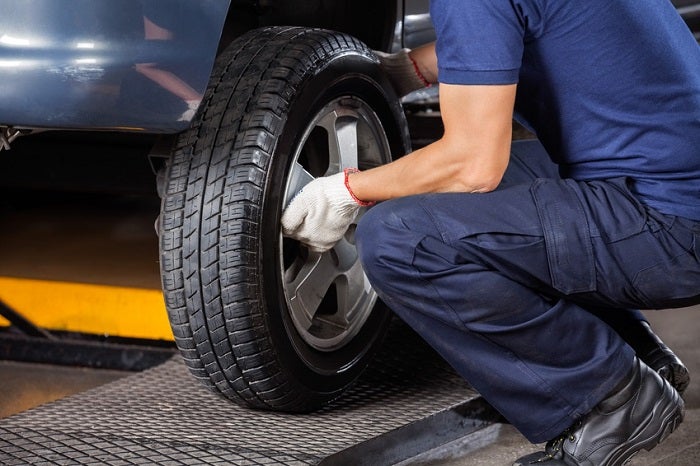Morris Tire Service: Trusted and Economical Treatment
Morris Tire Service: Trusted and Economical Treatment
Blog Article
Tire Repair Service Myths Debunked: Dividing Fact From Fiction
In the realm of automotive upkeep, tire repair service holds a considerable place, yet it is frequently shrouded in myths and misunderstandings that can lead to confusion for lorry proprietors (morris tire). From the misconceptions bordering patching versus plugging a punctured tire to the performance of numerous tire sealants, there are several vital locations where clarity is required to make enlightened choices.
Common Tire Fixing Misconceptions
Eliminating prevalent false impressions surrounding tire repair is crucial for keeping road safety and security and prolonging the longevity of your automobile's tires. One usual myth is the belief that a pierced tire is beyond repair and has to be changed entirely. Actually, lots of punctures can be properly fixed by a professional, adhering to market criteria. It is necessary to recognize that not all punctures are produced equivalent; while some may undoubtedly require a tire replacement, the majority can be securely fixed.
Another misunderstanding is the idea that a do it yourself tire repair work kit is an adequate service for all tire concerns. While these kits can be convenient for temporary fixes in emergencies, they are not a permanent service and may not deal with the underlying problem (morris tire). Seeking the competence of a certified tire service technician is constantly advised to ensure the safety and honesty of the tire

Can You Repair a Punctured Tire?
Fixing a pierced tire is a common practice in the automobile sector, often performed by professional service technicians following specific guidelines and requirements. Not all punctures can be repaired. The location, size, and severity of the leak are essential consider determining if a tire is repairable. Slits situated on the step location of the tire are usually repairable as lengthy as they are within a particular dimension limitation and do not impact the tire's architectural integrity.
It is essential to note that penetrates near the sidewall or shoulder of the tire are normally not repairable due to safety and security worries. Such areas undertake substantial stress and flexing, making repairs unreliable and possibly unsafe. In addition, if the puncture is too large, exceeding the advised repairable dimension, website here or if the tire shows indications of internal damage, it is safer to change the tire completely.
The Reality About Patching Vs. Connecting
When taking into consideration the repair service of a pierced tire, understanding the distinctions between patching and plugging is crucial for making notified decisions concerning tire maintenance and safety and security. Covering involves fixing the tire from the inside, where a spot is applied to cover the puncture. This approach is thought about more dependable and long-lasting as it addresses the damages internally, reducing the threat of air leakage and more tire damages. On the other hand, connecting is a quick repair that involves placing a rubber plug right into the punctured location from the outside. While plugging is hassle-free and can be done without eliminating the tire from the edge, it is generally taken into consideration a short-term service and may not provide the exact same level of resilience as a spot.
Misconception: All Tire Sealants Are Efficient

When selecting a tire sealer, think about factors such as the dimension of leaks morris tire service it can efficiently fix, compatibility with tire pressure monitoring systems (TPMS), and whether it is safe for the tire material. Checking out reviews and seeking suggestions from professionals can aid you make a notified choice. Furthermore, regular upkeep and timely substitute of sealer can help make certain optimal efficiency. Remember, while tire sealers can be valuable in emergencies, they are not a substitute for appropriate tire treatment and upkeep.
Best Practices for Handling Flat Tires
In light of the differing effectiveness of tire sealants, recognizing ideal methods for dealing with flat tires is essential for maintaining roadway security and automobile performance. Loosen the lug nuts, elevate the automobile with the jack, remove the lug nuts and level tire, and change it with the extra tire. Store away the level tire, Home Page devices, and equipment, and remember to examine the spare tire's stress periodically.
Verdict
In final thought, it is essential to different fact from fiction when it involves tire repair work misconceptions. Comprehending the truth concerning patching vs. connecting, the effectiveness of tire sealants, and ideal practices for taking care of punctures can assist ensure the safety and security and durability of your tires. By disproving common misunderstandings and adhering to proper repair work standards, you can make enlightened choices when it pertains to keeping the health of your automobile's tires.
Report this page